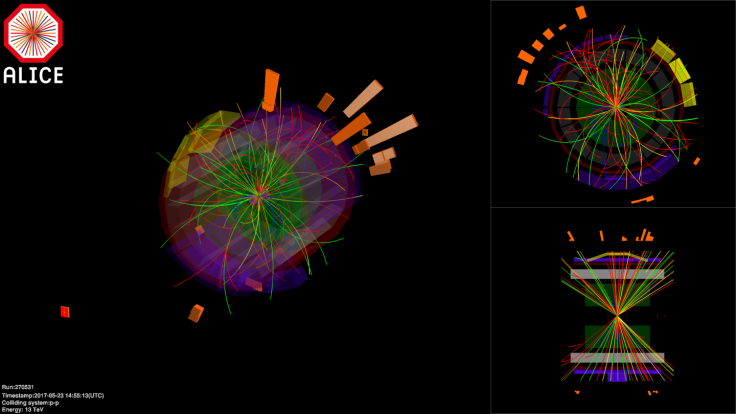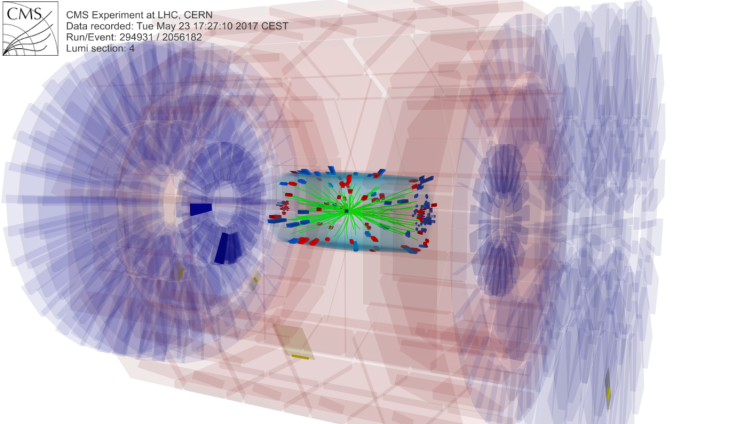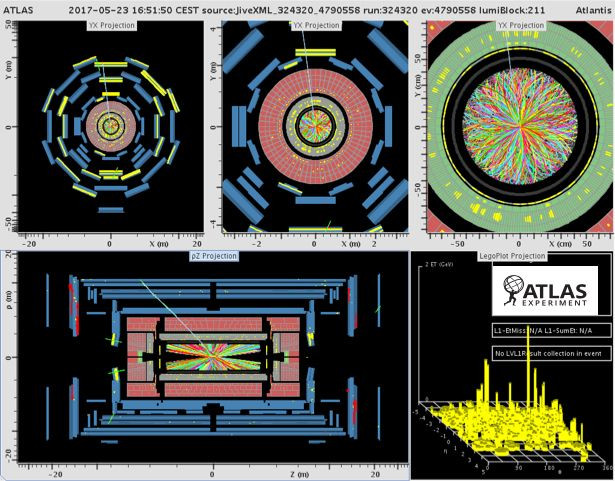CERN LHC Update: Large Hadron Collider Starts 2017 Operations In Earnest

The Large Hadron Collider (LHC) began operations in earnest Tuesday, upping its activity a notch and allowing associated experiments to start taking data for the first time in 2017. The various experiments along different beams of the famous particle accelerator are currently receiving only a few proton bunches but in a few weeks, the collider will produce billions of collisions every second.
LHC operators are hoping to produce the same amount of data as in 2016, even though the collider started a month later this year due to a longer year-end technical pause in operations. In 2016, the LHC produced over 6.5 million billion collisions, which amounted to a luminosity of almost 40 inverse femtobarns over the course of the year. The luminosity is an indicator of potential collisions per unit of surface over a given time period.
Read: LHC Experiment Finds Hints Of Physics Beyond Standard Model
“Over the first two years of operation at a collision energy of 13 TeV, we built up an excellent understanding of how the LHC works, which will allow us to optimise its operation even further in the third year. Our goal is to increase the peak luminosity even further and to maintain the LHC’s excellent availability, which in itself would be a great achievement,” Frédérick Bordry, Director for Accelerators and Technology at CERN, said in a statement Tuesday.

The operators will not only increase the number of proton bunches generated over the coming weeks, but also reduce the size of the beams at intersection points, making them more focused. The former is important because generation of large amounts of data is crucial to the study of particle physics.
Eckhard Elsen, Director for Research and Computing at CERN, said in the statement: “The LHC experiments are well prepared to double their statistics compared to what they obtained in 2016 at 13 TeV. Thanks to the new data, they will be able to reduce the uncertainties that surround their observations every time we enter unchartered territory.”

There are two broad lines of study at the LHC: known physics, comprising of the Standard Model, and unknown phenomenon. The two large general-purpose experiments of LHC — ATLAS and CMS — will continue through 2017 to investigate the Higgs boson, discovered at LHC in 2012. The two experiments are also looking for new particles which could be components of dark matter.
Using that data, “physicists hope to be able to identify disparities between their measurements and the Standard Model. This is one of the ways in which the unknown can be probed. Although it describes a lot of the phenomena of the infinitely small precisely, the Standard Model leaves many questions unanswered. For example, it describes only 5 percent of the universe; the rest is formed of dark matter and dark energy, the nature of which are as yet unknown.”
Read: Properties Of Dark Matter Limited By Fermilab Experiment That Uses Bubbles

Another LHC experiment, LHCb, will look into the asymmetry between matter and antimatter, and will try to understand why antimatter is largely absent from the universe today, despite being created in equal amounts as matter during Big Bang.
The ALICE experiment at LHC will not conduct any new lead ion collisions this year, but will continue the analysis of data collected in 2016. It will also record proton-proton collisions, data from which led to the recent announcement of the observation of quark-gluon plasma.
© Copyright IBTimes 2024. All rights reserved.





















